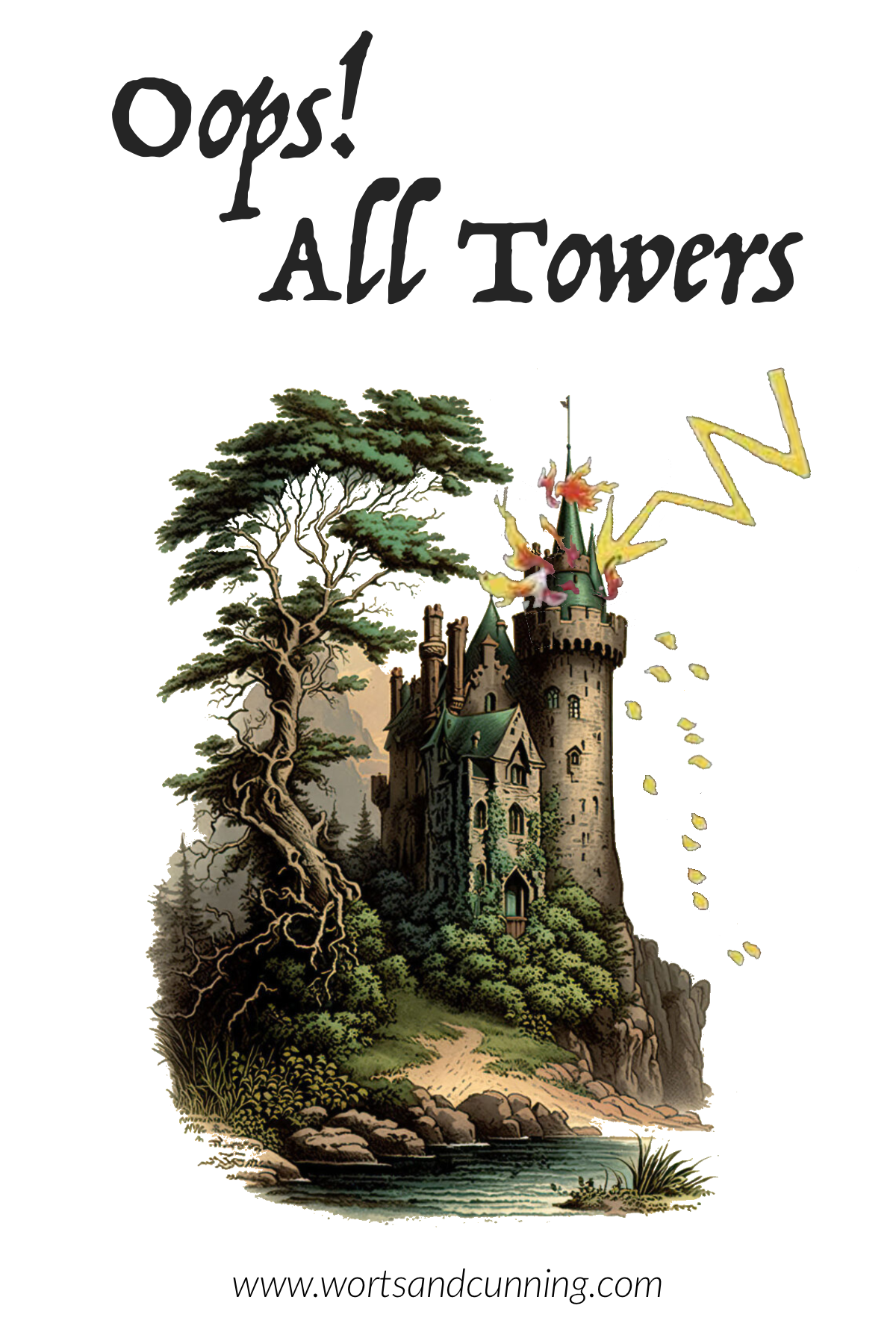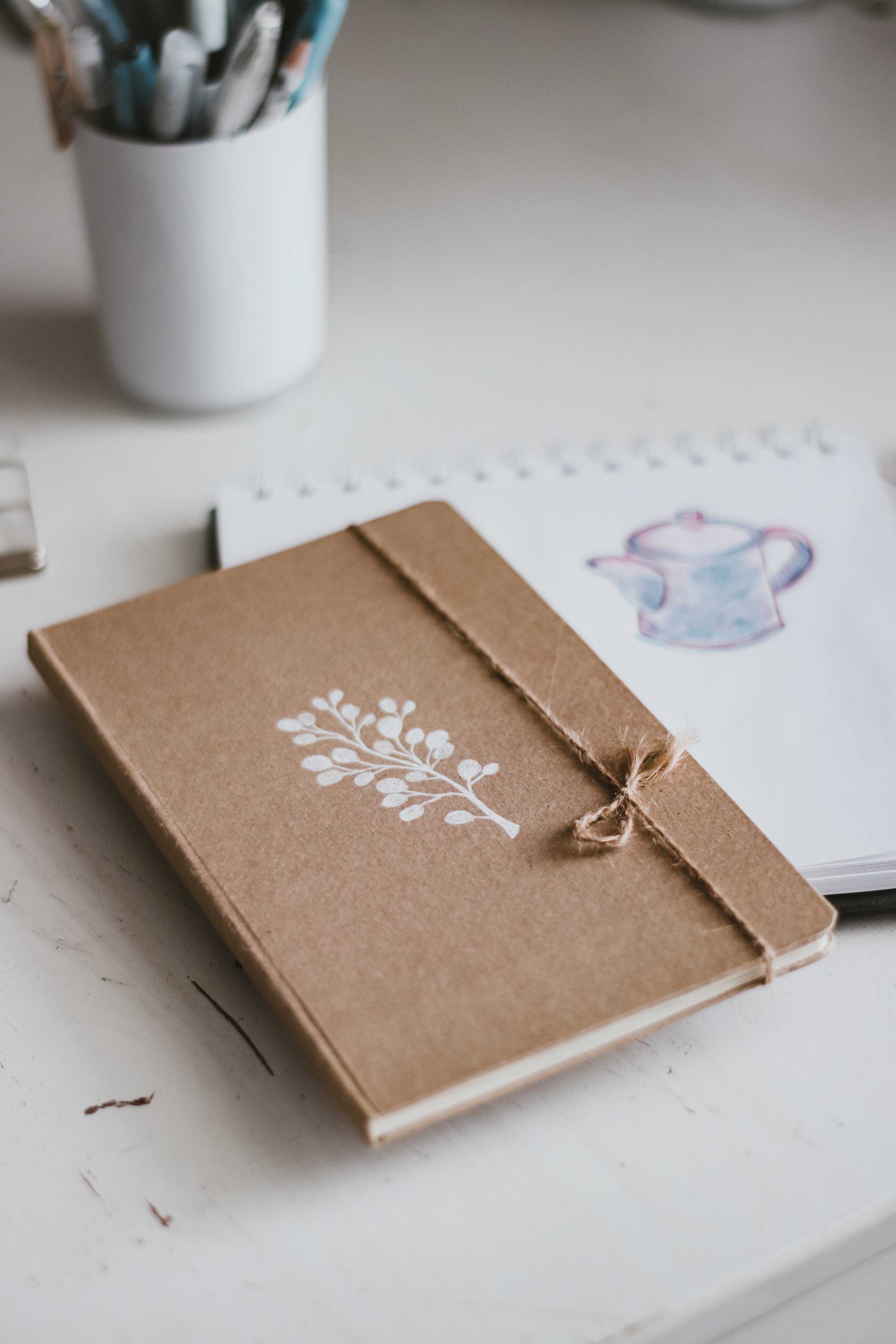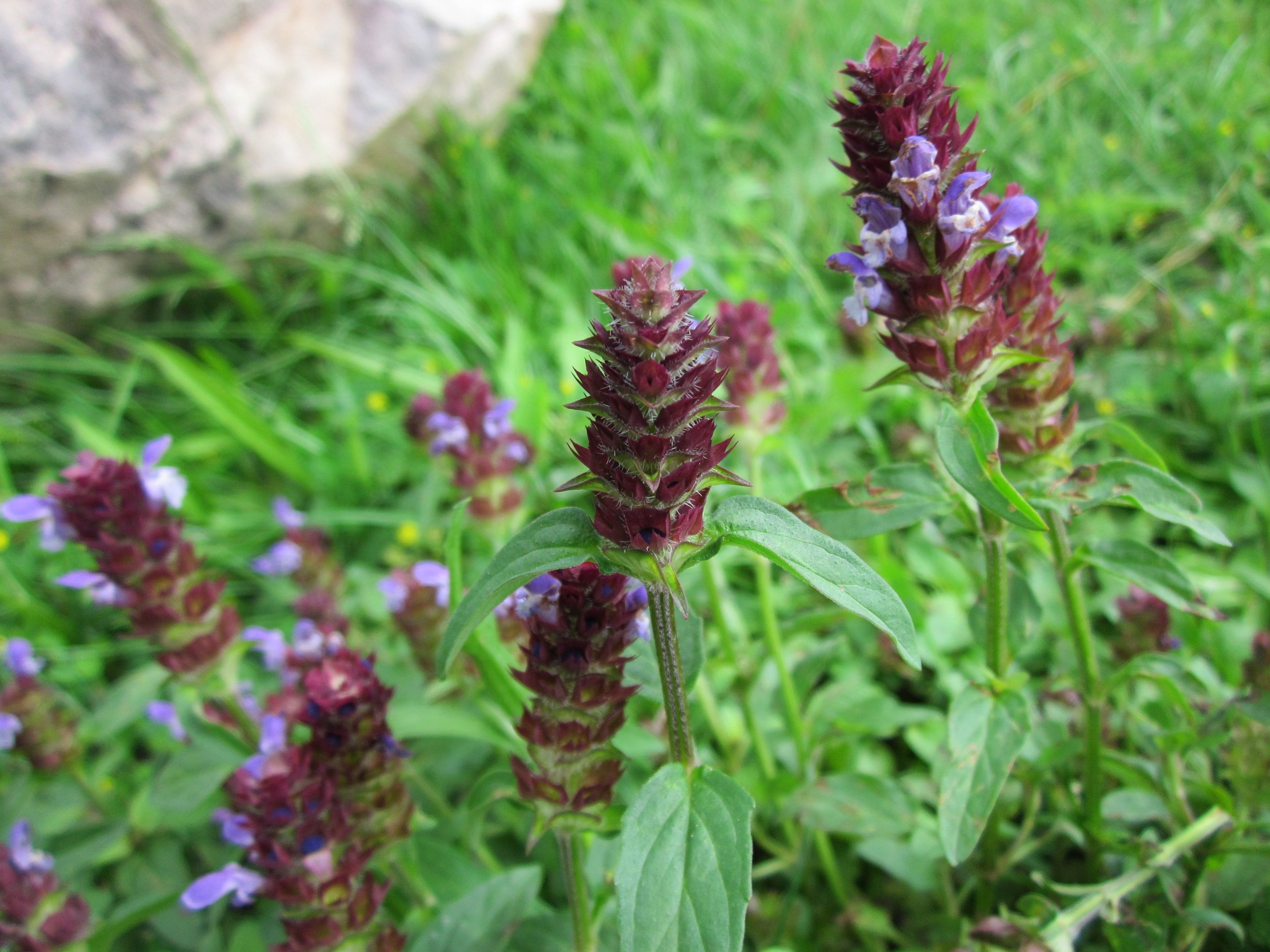Oops! All Towers
I really enjoy tarot-based memes. They can accurately sum up hundreds of years of tarot wisdom with humor and often uncanny precision. When the following meme showed up during the pandemic it felt like it had been self-generated by the galaxy.¹
Showing a classic yellow box Rider Waite Smith tarot with the Tower card replacing the usual image of the Magician and emblazoned with the words "Oops! All Towers," the meme is a play on the Oops! All Berries memes that have been around for forever (i.e. the 1990s). The Oops! All Towers image is as excellent, in my opinion, as the "dump him" tarot meme (which you should definitely look up).
When I saw the tarot tower meme I immediately thought that it would be amazing to do a spread with only Tower cards.² While the Tower card fills many readers with dread, I do have a fondness for the card. Now, don't get me wrong, I still have a visceral memory of pulling the Tower for the first time as a young witchling and how it made me feel a certain level of dread even if it was accurately summing up what was about to happen in my life. But as I've grown older and grayer and gayer I've come to love the Tower in a strange way. There can be an odd comfort in the finality of the (not literal) freefall and knowing that we only have so much power within certain cycles of change. It can be a relief for specific structures in our life - from relationships to work situations to present identities - to collapse so that we can start again. It's certainly not the most comfortable way to experience transition and change but it is effective at resolving issues of stagnation.
So what would a tarot deck of only Tower cards read in a spread? Or a tarot deck of only the Three of Cups? Or the High Priestess? The idea of a single card used to read all positions of a tarot spread felt really intriguing and so I tried it out.³ Here's how it went.
I chose a spread that I'm familiar with - my beloved Celtic Cross - and proceeded to read every position as if I'd pulled the Tower card there. I read what it would mean if I pulled the Tower for the significator card and the obstacles card, for past and future, and so on.
It was so interesting to see how the meaning of the Tower changed and shifted as I read it in 10 separate places in the spread and I realized that this technique would make a great teaching tool. You get to stretch beyond the singularity of meaning that we can get stuck in with cards (i.e. their easily remembered surface memes) and remember that each card can and often will show up in every aspect of a spread and your life if you read the tarot long enough.
If you're interested in trying a one card approach to your favorite tarot spread, I've got a few ideas on approaches you might take if you're not feeling immediately drawn to the Tower card:
Start by shuffling your deck (either the whole deck or just the Major or Minor Arcana) and the first card that you pick becomes the card that you read with.
Choose to work with your year card or birthday card as the one you'll read the whole spread with.
Choose the card that you love the most in your tarot deck and read with that. Alternatively, choose the card that you struggle with the most and read with that.⁴
If you keep pulling a card again and again in your tarot practice, choose that one as your card for your reading.
Choose a spread that has as many cards as you have decks. If you have five decks, for example, choose a five card spread to read. Then you can pull a Tower card from each of those decks for each position in the spread to see how different tarot creators portray the energy of the same archetype.⁵
Since we've gotten this far, might as well fully commit and talk about the flower essence that you might consider pairing with an all Tower tarot spread. The "oops!" portion of the meme got me thinking of the phrase "whoopsie daisy" and so Daisy (Bellis perrinis or your own local variety) seemed like the obvious choice. As Daisy isn't an essence that I've had much experience with, I had to look up what others have written and, friends, it's destiny. Essentially, Daisy essences help to bring about cohesion and clarity by puling energy downwards and grounding it. One of the ways that the Tower can be interpreted is that a period of hubris (often led by over-thinking or under-thinking a situation, ignoring good advice, and chaotic communication whether internal and/or external) comes to a dramatic and clarifying end. So, Daisy it is.
What other magick that we've explored over the years might you incorporate into your Oops! All Towers moment? Build an Oops! All Towers altar? Vision board? Oops! All Towers breathwork?⁶
⚡️
So, would you ever do an Oops! All Towers spread? Or is there another card you're thinking of working with? If you're already thinking of other memes to create tarot spreads with or just enjoyed (maybe with a touch of mild horror) the idea of an all Tower card spread, my work here is done.
This post was made possible through patron support.
❤ Thank you, friends. ❤
Footnotes
If you know who originally created the Oops! All Towers meme please let me know in the comments so I can add credit.
I recognize that this is probably not a common or even reasonable reaction to such a doom-filled meme.
You don't need to choose a card that you're not feeling emotionally in the space to face. It can be a card like the Tower which you'd rather not pull, but is not going to fill you with existential dread to have to interpret over and over again. No need to make your tarot practice torturous. Be kind to yourself.
See above footnote.
This is a great practice for community spaces where folks bring their own decks and enjoy comparing images and energies together.
I imagine this would need to be a community-based breathwork practice where it starts off with everyone whispering in multiple languages and gradually increasing in volume until everyone is scream talking and then it all suddenly ends when a very loud crash sound is made (maybe a badly tuned gong?). Then everyone lays down quietly for a bit, ha! I guess you can turn this into a solo practice by having multiple news channels opened at once while you're shouting at the various screens… I've been in Tower land too long, going to go find my sweetest, nicest tarot deck and look at the Star card for a while.
Tarot decks shown clockwise from top left are: Tarot of the Spirit by Pamela and Joyce Eakins, The Intuitive Night Goddess Tarot by Linzi Silverman, Many Queens Tarot by Lettie Jane, The Future Ancestor Tarot by lexi luna, The Neutral Vibes Tarot by Printagrams, and The Witches’ Wisdom Tarot by Phyllis Currot and Danielle Barlow.





















